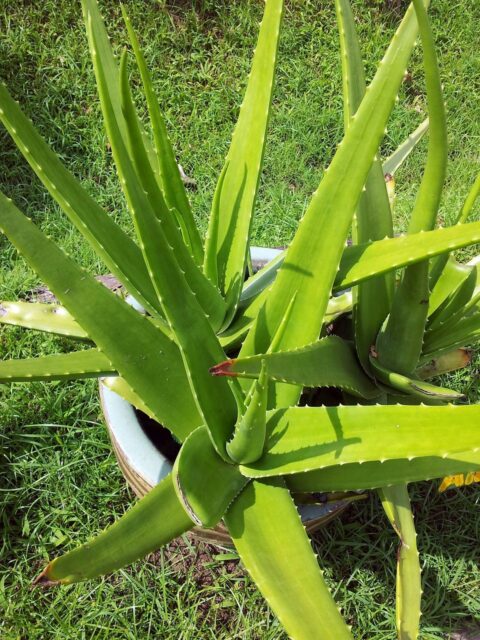The Aloe Vera plant is widely known for its many health and medicinal benefits. Some people call it ‘the marvel plant’ because of these benefits.
But there are so many other plants that have the same look and behave just like Aloe Vera. In this piece, we’ll consider plants similar to Aloe Vera, their benefits, and properties.
Plants Similar To Aloe Vera
1. Agave Plant
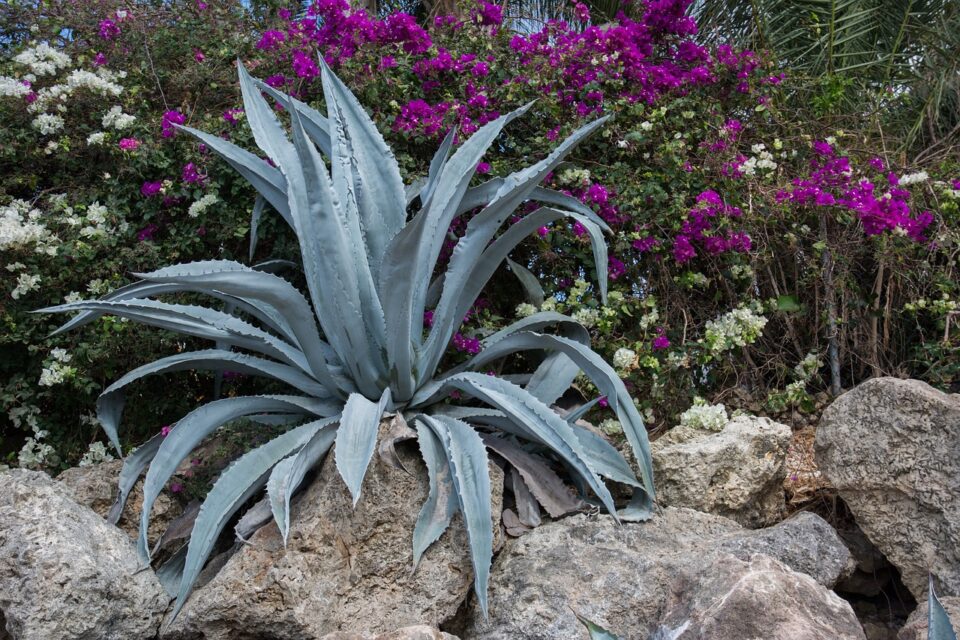
The Agave plant is native to the Americas and is typically seen in desert areas. Its rosette shape, succulent leaves, and spiky edges are similar to aloe vera, although Agave is often larger, with outliers such as tree aloe and Aloe bainesii. While both plants require well-drained soil and sunlight, Agave can withstand more severe drought conditions.
Furthermore, aloe plants normally have a lifespan of about twelve years, whereas agave plants can live for up to a century. Also, aloe plants frequently produce several flowers, whereas agave plants normally produce just one, and the plant often dies after blooming.
Agave, like aloe vera, has a long history of therapeutic use with potential advantages for wound healing. Interestingly, Agave produces agave nectar, a natural sweetener.
While Aloe vera leaves produce a gel-like substance, the agave leaves lack that gel-like feel and they’re fibrous as well. That’s the difference between them.
2. Aeonium
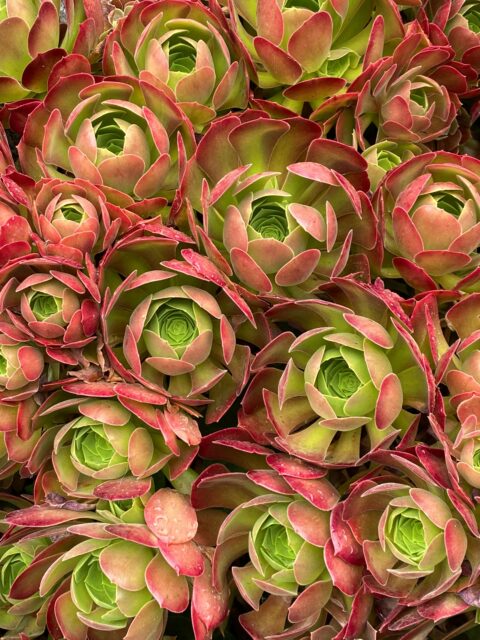
Aeonium is comparable to aloe vera in certain ways. Aeoniums, which are native to the Canary Islands, Madeira, and North Africa, have a rosette growth pattern similar to aloe vera but are more colorful and varied in shape.
Furthermore, Aeonium species exhibit beautiful color shifts in reaction to sunshine or temperature differences, which adds to their appeal in gardens and succulent collections.
While both plants prefer well-drained soil and abundant sunlight, Aeoniums flourish in slightly lower temperatures. Sizes range from small rosettes to larger, branching complexes. Aeoniums do not contain the same gel-like component as aloe vera but they are valued for their distinctive foliage.
3. Ariocarpus
Ariocarpus is a genus of small, slow-growing cactus found in dry parts of North America, mainly Mexico and southwestern Texas. These cacti are commonly referred to as “living rocks” due to their low, compact growth habit and ability to fit into their rocky surroundings.
Ariocarpus cacti, which belong to the cactus family Cactaceae, grow in a markedly different manner than aloe vera do.
They have adapted to arid conditions and have thick stems that store water to help them withstand droughts. The leaves are frequently reduced to little, inconspicuous structures or gone entirely.
4. Bergeranthus
Bergeranthus is a genus of succulent plants from the Aizoaceae family that are native to southern Africa. These plants are noted for their low-growing, spreading habit, as well as their eye-catching foliage and vibrant flowers.
Bergeranthus plants are succulents that produce tiny, fleshy leaves of varied colors and textures. They can develop dense mats or clusters, making them ideal for ground cover in gardens or container plants. These plants grow differently from aloe vera and are from a distinct botanical family.
Aloe vera is known for its upright rosettes and healing gel but Bergeranthus is known for its low-spreading habit and spectacular flower displays.
5. Cape Aloe (ALOE FEROX)
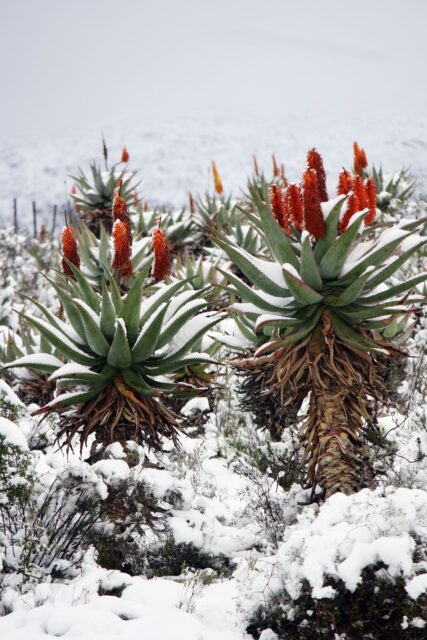
Cape Aloe, also known as Red Aloe, Tap Aloe, Bitter Aloe, or Aloe Ferox, is distinguished by its tough, spiky leaves and bright orange blossoms.
This aloe species is native to South Africa and is well-known for its medicinal benefits. It is frequently grown for its gel. Unlike the typical Aloe vera, the Aloe ferox plant has long, serrated leaves that form stunning rosettes. Both are succulents that flourish in desert environments.
6. Carion flower
The Carrion Flower is succulent and native to Africa. It has thick, fleshy leaves that look like aloe and it is also called Stapelia.
Unlike aloe vera, Stapelia is a part of the Apocynaceae family and is known for its distinct and unusual qualities. The plant’s popular name comes from the peculiar aroma emitted by its blossoms, which resembles the stink of rotting flesh. This aroma is intended to attract flies, which serve as pollinators.
7. Dryland Bromeliads
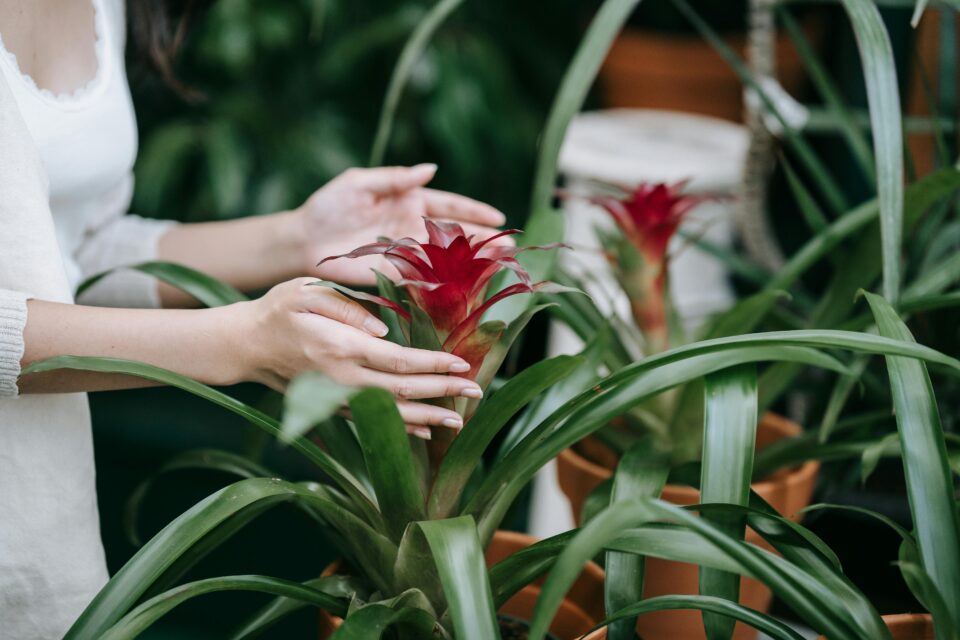
Dryland Bromeliads are succulent plants of the Bromeliaceae family that flourish in desert conditions, similar to aloe. However, this plant’s rosettes are thick and come in different textures and colors. The leaves are arranged in a symmetrical arrangement, which gives them a characteristic appearance. In contrast, Aloe vera has long, pointed leaves that form a rosette.
8. Echeveria
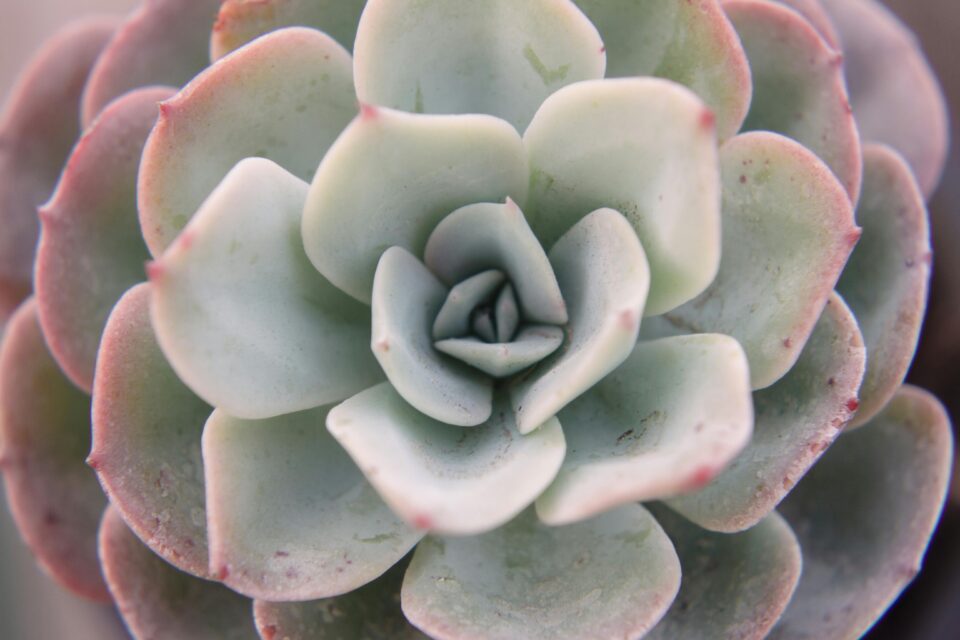
Echeveria is a prominent succulent plant genus distinguished by its rosette-shaped growth and eye-catching foliage.
Unlike aloe vera’s long, tapering leaves, Echeveria leaves are brighter and rounder, with unique textures and patterns. Echeveria is cultivated largely for its ornamental appeal.
9. Euphorbia
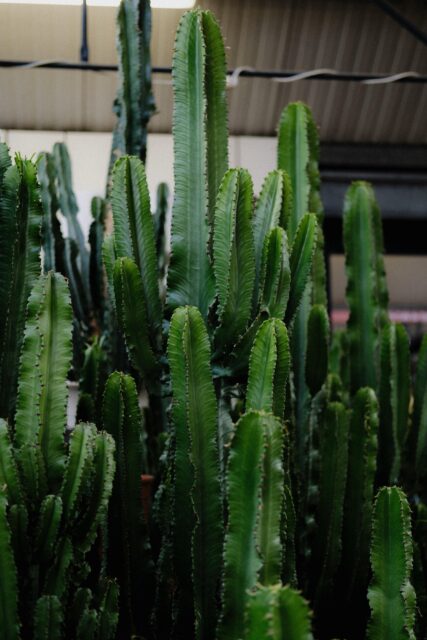
Euphorbia belongs to the varied Euphorbiaceae family, which includes both succulent and non-succulent species.
The Euphorbia trigona have cylindrical stems with white latex sap, unlike Aloe vera leaves, which have a soothing gel. Euphorbias, like aloes, are hardy plants that thrive in arid climates.
10. Faucaria
Faucaria, sometimes known as “Tiger Jaws,” is a succulent that resembles the aloe vera but stands out for its distinct leaf structure.
While aloe vera has long, pointed leaves, Faucaria’s leaves resemble gaping jaws, forming separate pairs with serrated edges. Faucaria is native to South Africa and, like aloe vera, thrives in well-drained soil and sunlight.
11. Ox Tongue Plant
The Ox Tongue Plant belongs to the genus Gasteria. It has some thick leaves that have tongue shapes and are arranged in rosettes. It is native to Southern Africa and is succulent, similar to aloe plants but with a distinct leaf structure.
While both require well-drained soil and sunlight, Gasteria’s leaves are mottled and resemble a cow’s tongue, distinguishing it as a visually appealing and hardy succulent.
12. Haworthia
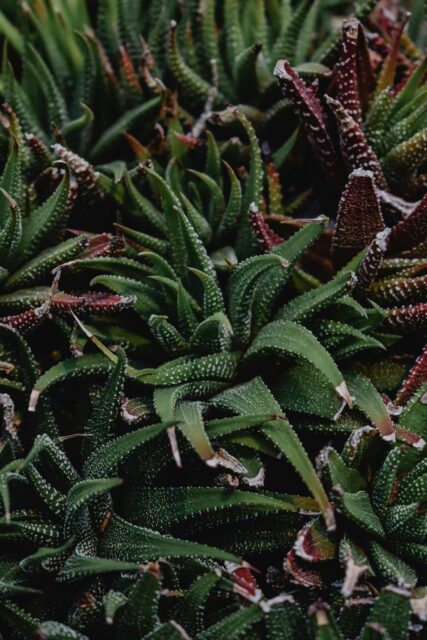
Haworthia is a succulent in the Asphodelaceae family that resembles aloe vera. Also known as Zebra Cactus, this plant is distinguished by its rosette growth pattern and succulent leaves.
Haworthia species come in a variety of forms and sizes. Haworthia’s foliage, like that of Aloe Vera plants, forms a rosette and sprouts from the plant’s stem axis. Unlike the larger leaves of Aloe vera, Haworthia leaves are frequently shorter and organized in elaborate patterns, with window-like translucent parts.
The Haworthia plant is not only a wonderful substitute for Aloe Vera, but it is also much easier to care for because its watering and lighting requirements are simple to meet.
13. Héchtia
Despite being in a different bromeliad genus than Aloe Vera, Hechtia distinguishes itself by comparable rosettes of stiff, often pointed leaves.
Hechtia species, native to Mexico and Central America, provide a unique touch to succulent gardens.
14. Maguey Plant
The Maguey Plant, formally known as Agave Americana, is distinguished from Aloe Vera by its sturdy and symmetrical rosettes of spiky, succulent leaves.
This species, also known as the Century Plant, is native to dry regions of the Americas. It has a characteristic growth pattern that distinguishes it as a hardy and iconic plant in arid landscapes.
15. Mountain Aloe Plant (Aloe Marlothii)
Aloe marlothii, commonly known as Mountain Aloe, is distinguished by its tree-like form and huge, spiky leaves. This succulent plant species, native to Southern Africa’s mountains, has an unusual fan-shaped leaf that distinguishes it from the more familiar Aloe Vera.
Despite sharing some characteristics, such as succulence and a propensity for sunny, well-drained environments, Aloe marlothii’s distinctive look distinguishes it as an iconic species in its own right.
Conclusion
So, here are some of the plants similar to aloe vera. They have their similarities as well as features that make them vary. If you’re looking to mimic the aloe vera plant, these species are worth considering.
